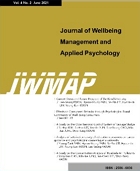 E-ISSN : 2586-6036
E-ISSN : 2586-6036
LEE, Ye-Eun
KWON, Young-Eun
JEON, Ye-Won
KWON, Lee-Seung
Abstract
Purposes: This is a study on the perception of safety in use according to cosmetic information. Research design, data and methodology: As a result of analyzing 324 women in their twenties living in the metropolitan area, the following conclusions were drawn. Results: As a result of measuring the awareness of cosmetic information, the awareness of 'cosmetic-related knowledge' (M=3.52) and 'cosmetic performance' (M=3.43) was high, indicating that information on cosmetic knowledge was actively shared with each other. It was understood that the method of use and effect were properly recognized and that the cosmetics were selected. 'Correct cosmetic storage method' is significant in the factors of interest in cosmetics (p<.001), and 'the harmful ingredients of cosmetics that should be avoided' are significant in the factors of cosmetic information (p<0.05) and the factors of interest in cosmetics (p<0.01). 'Trouble-causing ingredients' showed a statistically significant difference in safety perception in all factors except cosmetic performance factors. Conclusion: There is a need to construct a system that allows consumers to easily purchase cosmetics that are necessary for their skin by schematically or simplifying the information on the usage period and trouble-causing ingredients after opening the cosmetics to be easily understood.
- keywords
- Safety perception, Cosmetic information, Harmful ingredients, Trouble ingredients
- Downloaded
- Viewed
- 0KCI Citations
- 0WOS Citations













